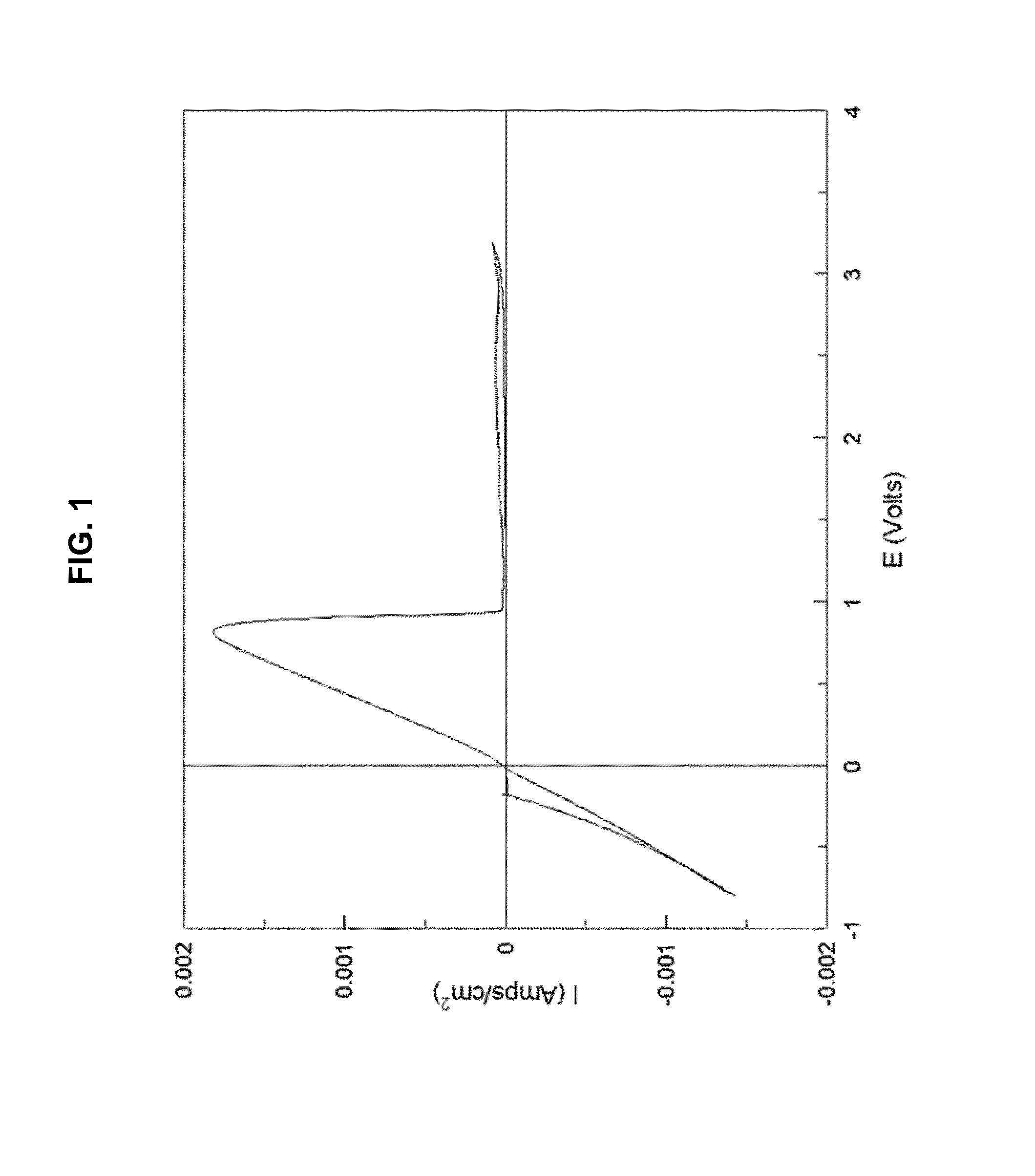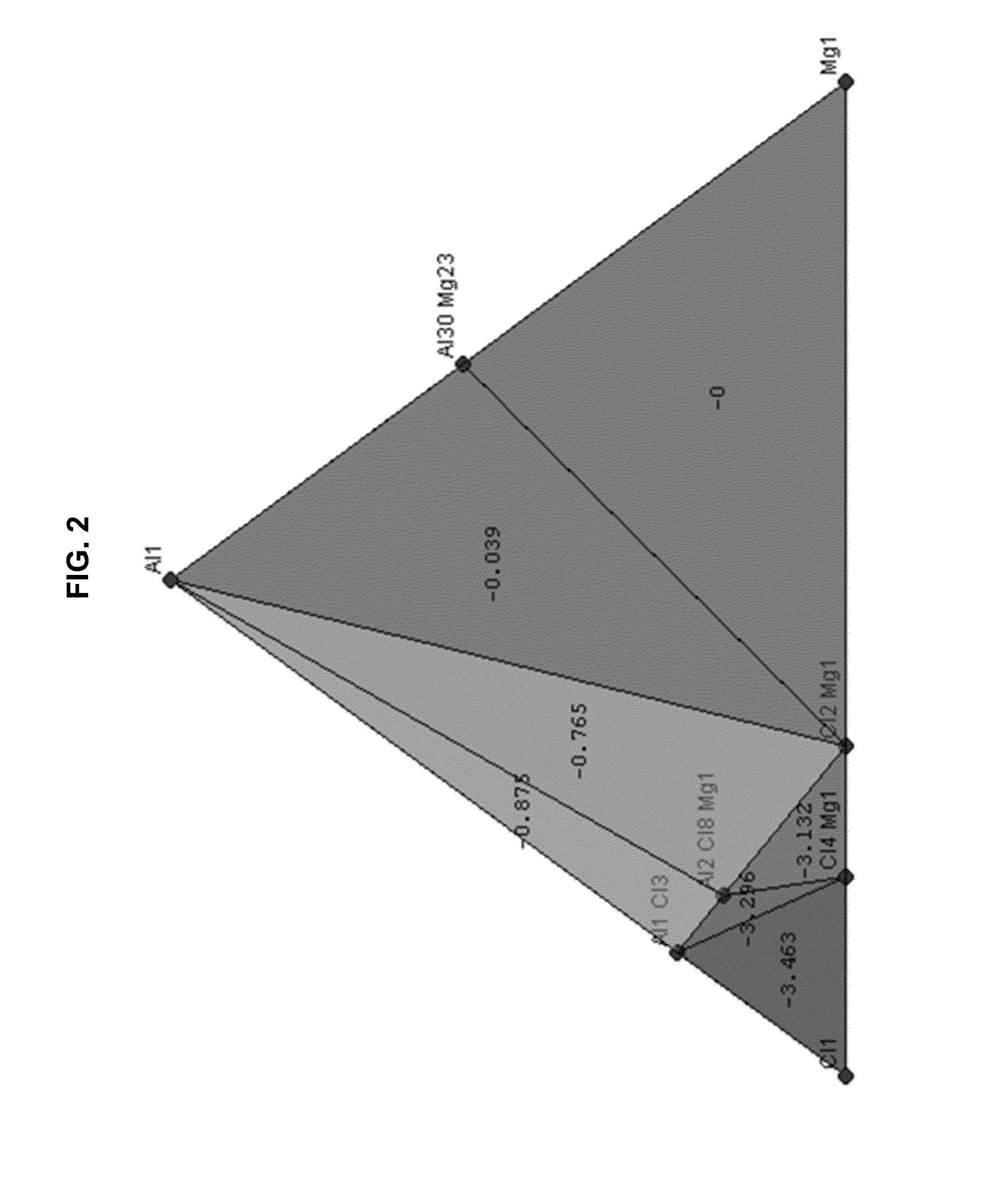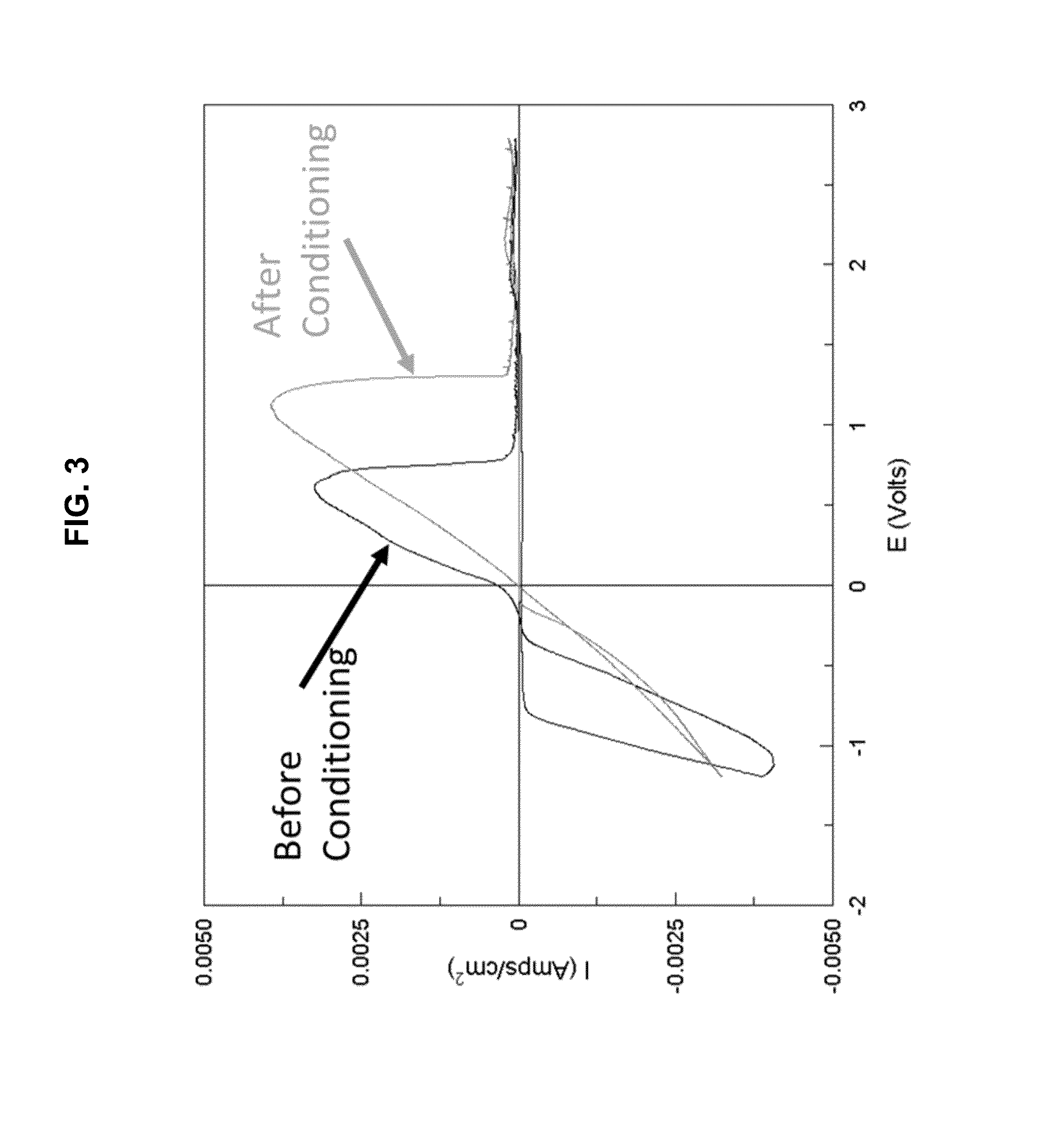Non-aqueous electrolyte for rechargeable magnesium ion cell
a rechargeable magnesium ion cell and electrolyte technology, applied in the field of electrolysis solutions, can solve the problems of high reactiveness, high cost, and disadvantages of magnesium alkali anode, and achieve the effect of promoting deposition and intercalation of mg and high conductivity
- Summary
- Abstract
- Description
- Claims
- Application Information
AI Technical Summary
Benefits of technology
Problems solved by technology
Method used
Image
Examples
example 1
[0232]FIG. 1 is a graph displaying a typical cyclic voltammogram of the all-inorganic salt Magnesium Aluminum Chloride complex. Solutions utilize tetrahydrofuran (THF) as the solvent and Platinum as the working electrode while Magnesium serves as both the auxiliary and reference electrodes.
[0233]The data depicted in FIG. 1 shows the potentiodynamic behavior of Mg2AlCl7 complex inorganic salt obtained with THF solution from the reaction of 2MgCl2+1AlCl3. The peak displaying maximum current density at −1 V is due to the deposition of magnesium metal while the peak with maximum current density at about 0.3 V is attributed to the subsequent electrochemical dissolution of the magnesium metal. The electrochemical window obtained with this system exceeds 3.1 V vs Mg / Mg2+. It is clearly evident from the cyclic voltammogram that the process of magnesium deposition and dissolution is fully reversible.
[0234]FIG. 2 depicts the Mg—Al—Cl ternary phase diagram derived from the ab initio calculated...
example 2
[0235]In a typical preparation of an electrochemically active MACC solution such as 0.267 M Mg2AlCl7, one may undertake the following reaction:
2MgCl2+1AlCl3→Mg2AlCl7,
by placing both ˜0.508 g MgCl2 powder (99.99%) and ˜0.356 AlCl3 (99.999%) into a single glass container with a stir bar under inert atmosphere. Thereafter add 20.0 ml of tetrahydrofuran (THF, anhydrous 2O) and stir vigorously because the initial dissolution is exothermic in nature. Subsequently stir and heat to >30.0 degrees Celsius for minimum of one hour after which solution may be returned to room temperature. The resulting solution is clear to light yellow or brown color with no precipitation. In some embodiments it is preferable to let the final solution sit over Mg metal powder in order to condition the solution for improved electrochemical response by reducing residual water and other impurities.
[0236]In a typical preparation of an electrochemically active MACC solution such as 0.4 M MgAlCl5, one may undertake th...
example 3
[0238]Referring now to FIG. 4, which displays a graph of the potential response of resulting during chronopotentiometry experiments carried out with Mg2AlCl7 complex inorganic salt obtained with THF solution from the reaction of 2MgCl2+1AlCl3. This test utilizes Magnesium electrodes in a symmetric cell fashion and an applied current of 0.1 mA / cm2, which switches polarity every one hour. The overpotential for dissolution is quite small (˜0.05 V vs. Mg) throughout the test while the overpotential for deposition varies between −0.1 and −0.5 V vs. Mg metal. The results suggest the overpotential for Mg deposition is at most −0.5 V vs. Mg / Mg2+, but that the mean within the 100 hour period is about −0.25 V vs. Mg / Mg2+.
PUM
| Property | Measurement | Unit |
|---|---|---|
| Temperature | aaaaa | aaaaa |
| Fraction | aaaaa | aaaaa |
| Electric potential / voltage | aaaaa | aaaaa |
Abstract
Description
Claims
Application Information
 Login to View More
Login to View More - R&D
- Intellectual Property
- Life Sciences
- Materials
- Tech Scout
- Unparalleled Data Quality
- Higher Quality Content
- 60% Fewer Hallucinations
Browse by: Latest US Patents, China's latest patents, Technical Efficacy Thesaurus, Application Domain, Technology Topic, Popular Technical Reports.
© 2025 PatSnap. All rights reserved.Legal|Privacy policy|Modern Slavery Act Transparency Statement|Sitemap|About US| Contact US: help@patsnap.com



